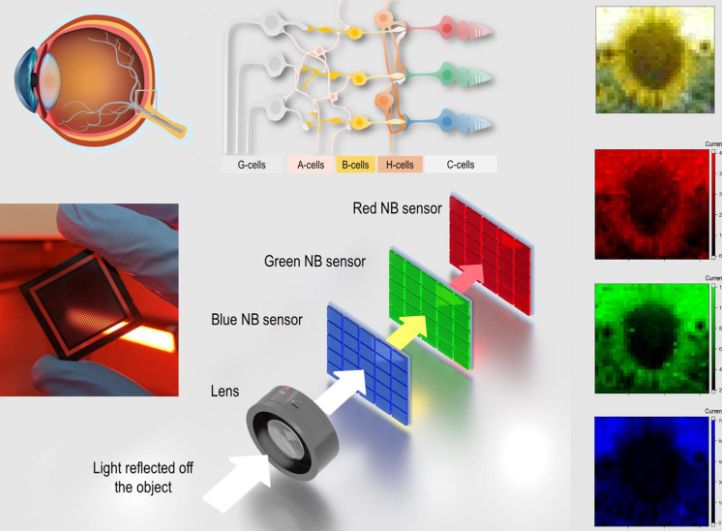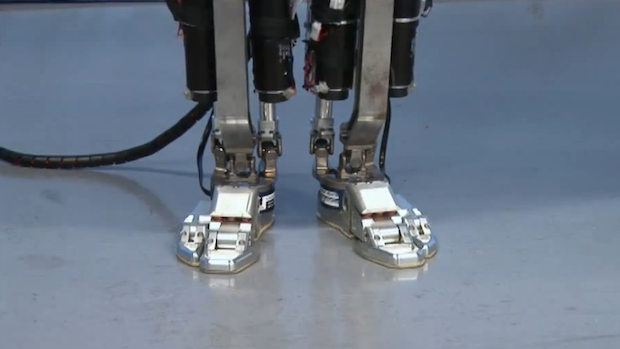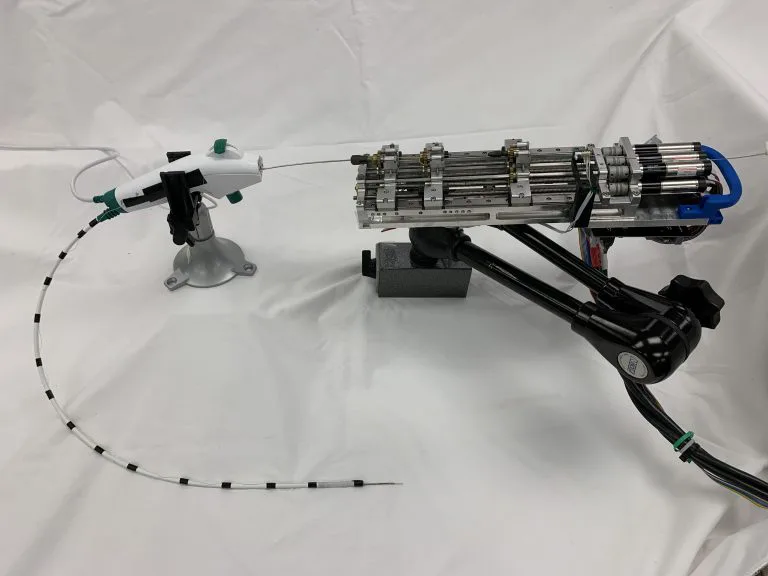
Inspired by the natural design of our retinas, scientists at Penn State have created a sensor array using narrowband perovskite photodetectors to replicate the function of our cone cells.
Cone cells in our eyes are responsible for color vision. And they are sensitive to red, green, and blue light wavelengths.
The device mimics the red, green, and blue photoreceptors along with the neural network found in human eyes. This is an exciting advancement in the field of artificial vision systems.
Combination of sensor array and neuromorphic algorithm
Researchers have attempted to create the colorful world that we perceive through our vision with the help of narrowband perovskite photodetectors.
To copy the neural network in our brains, the scientists have fused a neuromorphic algorithm into the device.
The algorithm renders the information captured by the photodetectors. Which further allows the production of high-quality images.
The process is like how our neural network processes visual information before transmitting it to the brain.
The combination of the sensor array and the neuromorphic algorithm allows the artificial device to replicate the early stages of visual processing found in human vision.
Customised perovskite material
For the study, a customised perovskite material was preferred over conventional silicon photodetectors that is used in cameras and optical technologies.
The perovskite material was engineered by the researchers at Penn State. It was sensitive to either red, green, or blue light, thus, mimicking the function of the cone cells in our retinas.
This selective sensitivity allowed the photodetectors to focus on individual parts of the light spectrum.
In contrast, silicon photodetectors used in traditional cameras do not distinguish colors. They absorb light indiscriminately across the spectrum.
To separate the red, green, and blue components of light, external filters were employed, which only allow one color to reach each section of the light sensor.
However, the process squandered a significant amount of incoming light. Thus, the overall effect reduced efficiency and potentially lowered the resolution as well.
Therefore, by utilizing narrowband perovskite photodetectors that are inherently sensitive to specific colors, the need for external filters was eliminated.
It increased efficiency and enhanced the resolution. Additionally, by mimicking the natural sensitivity of human vision, the produced images closely resembled to the colorful world that we perceive.

Device structure is similar to solar cells
Structure of the customised perovskite narrowband photodetection resembled that of solar cells, where light is used to generate electricity.
When light shines on the perovskite material, it generated a current without the need for additional energy input. This characteristic is like how our eyes capture information from light without requiring an external power source.
Takeaway
The integration of perovskite materials, mimicking the natural sensitivity of human vision, in photodetection devices brings us closer to more efficient, high-resolution imaging systems. It will also open doors for future innovations in artificial retina technology.
Over all, artificial vision systems would not only assist individuals with visual impairments but it will also have significant implications in human-machine interactions such as robotics, prosthetics, and medical devices.



